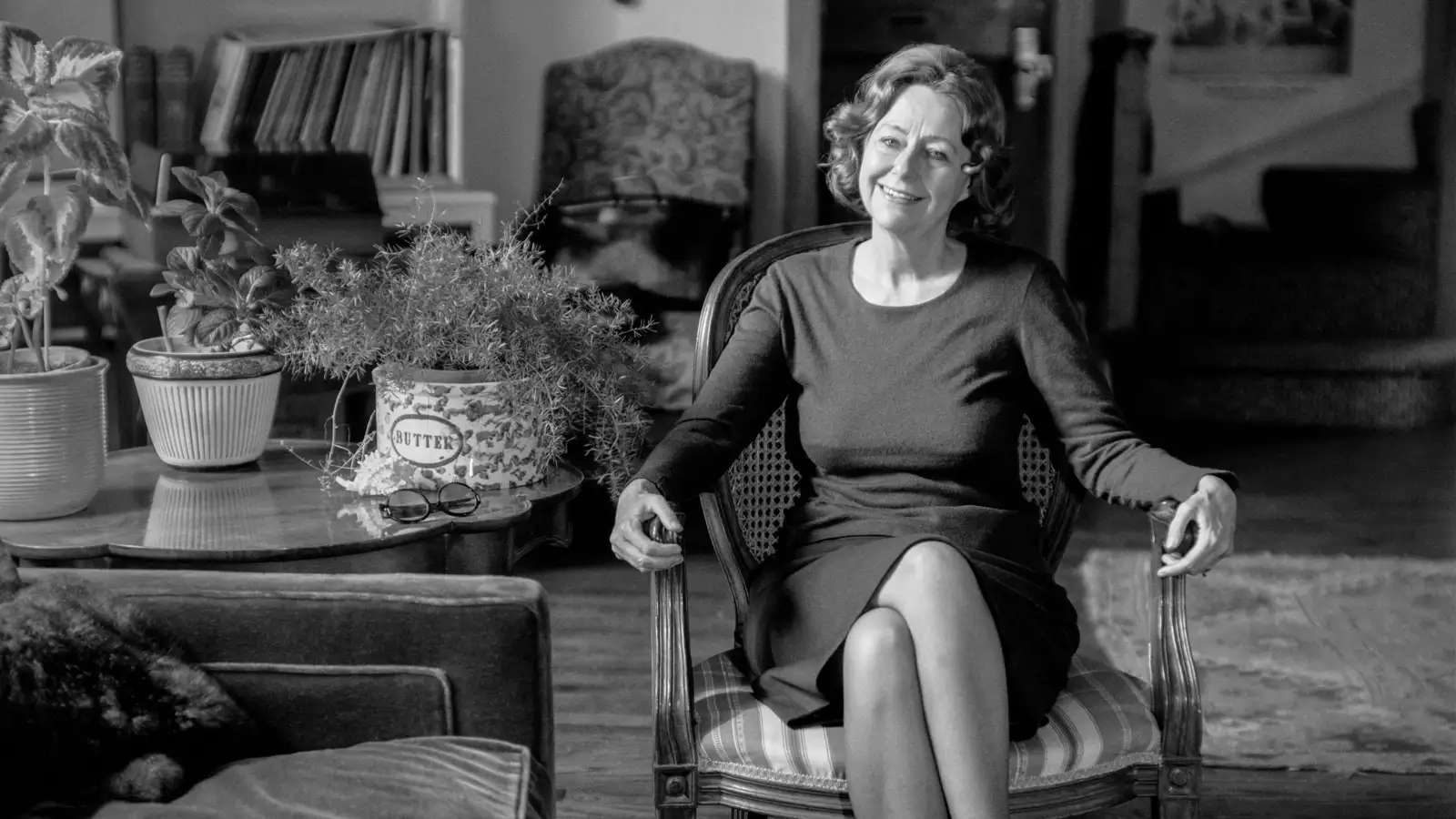
With the Women in Agency Festival, La Femme Theatre Productions founder Jean Lichty ’81 gives recent Barnard grads a powerful platform for original work

Few things are more intimate and revealing than the exchange of letters, especially those that passed between one of the most famous couples of 20th-century literature, the poet Robert Lowell (called “Cal” by his friends and intimates) and the writer Elizabeth Hardwick, who wrote some of her best essays and fiction while she was teaching at Barnard. Farrar, Straus and Giroux (FSG) recently published Barnard professor and vice provost Saskia Hamilton’s meticulously edited The Dolphin Letters, 1970-1977: Elizabeth Hardwick, Robert Lowell, and Their Circle, which has generated much interest in the literary community, garnering enthusiastic reviews from The New Yorker, Harper’s Magazine, and The New York Times, among others. In The New York Review of Books — the literary journal that Elizabeth Hardwick helped found in 1962 — Langdon Hammer, in his review, poignantly notes that “a letter passes between people, like a gift.” Poet and Barnard visiting professor Catherine Barnett spoke with Saskia Hamilton about the making of The Dolphin Letters.
Saskia Hamilton: In 1989, I was 22 years old, a first-semester graduate student in poetry at NYU, and I heard Elizabeth Hardwick needed an assistant. I didn’t have a sense in advance what the job would be — I thought it might be to type her essays — but it turned out that she had what she called a “whole room full of Cal’s things.” She said she needed somebody to organize and present these materials to librarians and archivists who would assess them for their collections. And so I created a catalog for her.
Elizabeth Bishop’s letters were published in 1994, and then Paul Mariani’s biography of Robert Lowell, Lost Puritan, came out the same year. When I was reading Mariani’s biography, I kept coming upon phrases I recalled from the work I had done with Elizabeth Hardwick. I had been very careful in 1989 not to read the letters I was cataloging because I didn’t want to intrude on her privacy, but upon occasion, if there was an undated letter, I’d have to read a little to get some context. It was from those letters that I recognized Mariani’s quotations and paraphrases. I was very interested to hear Lowell’s full voice, so I wrote to Elizabeth to ask if there was any current project to edit Lowell’s letters. I told her that if so I’d really love to work as an assistant on the project. She spoke to Jonathan Galassi at FSG, and together they arranged for me to edit the letters.
I edited Lowell’s letters, then later I co-edited the Bishop/Lowell letters. And then some years went by, and I thought I was done editing letters for a while! But after Hardwick’s death, when it was revealed that her letters to Lowell had survived — she thought they had been destroyed — Hardwick and Lowell’s daughter, Harriet, and Lowell’s stepdaughter Evgenia Citkowitz both asked if I would consider editing them. It was such a surprise to both of them that these letters had survived, and they both had a sense of their importance. But the letters did present a puzzle, because they record a very particular and distressed period in the lives of these two writers. The portrait the letters give of each of them is vital and necessarily incomplete, occasioned by a period of great distress and creative innovation. So how to present a rounded portrait of them both as writers and thinkers out of this material was a challenge.
When Hardwick’s letters were uncovered and revealed, I was concerned about the best way to present them fairly — I was concerned about publishing them just as-is, without hearing Lowell’s replies or understanding the ways in which Hardwick’s letters were in direct response to his. I wanted the complete correspondence and understood very quickly that it would have to be a conversation between them. So outsized was Lowell’s personality and effect on their literary milieu, especially due to his episodic mania [from bipolar disorder], that, as Lowell’s editor Robert Giroux said, “the whole continental literary set is now in the act.” I felt it was important to step back from the intensity of the marital conversation and include what both Hardwick and Lowell wrote to their friends — and to include what those friends wrote to them — about their own experiences and dilemmas with the writing. This was an ethical problem, in terms of honoring Elizabeth Hardwick, because otherwise these letters would have presented such a distorted portrait of her, drawn from one of the most painful times of her life and written during great distress. So the challenge was how to be most ethical toward her — and also toward him, who is sometimes too quickly judged.
The other ethical dilemma — and this is probably true with any collection of letters — is that the publication of letters intrudes on the privacy of more than just the writers themselves but also on the other people whose private lives they discuss.
Where is it that Yeats says that “words alone are certain good”? What moves me most in these letters are the precise words that Lowell and Hardwick use to describe their thinking, their reading, their feelings — the way they cut a certain kind of figure in prose. The clarity of expression set alongside the contradictions of feelings. To me, the most moving letters are in the last quarter of the book, where you have a sense that Lizzie really has achieved something very difficult in not settling for any of the roles that the breakup might have written for her. I’m also moved by Lowell’s wish for the true shape of his experience to be revealed to him in his lines, to help him know if his new life is an arrival or a departure. He has a wish for release from his vacillating feelings, a wish to know that what he had done by leaving Hardwick for [Caroline] Blackwood was fated somehow. The actual events of his life, and the end of his life, stand in contrast to that wish.
The letters themselves and Lowell’s book of poems The Dolphin are equally about love. The Dolphin is about Lowell’s passionate pursuit of Caroline. It is also about being driven off course in his pursuit of his sanity and his own art. The dolphin is the classical symbol of Apollo, the god of poetry, healing, and divination. The letters are a story of love that endures despite a terrible breakup that first unfolded privately between Hardwick and Lowell, then publicly when Lowell published The Dolphin. The book was reviewed as if the characters in the book of poems were the real people, so the real people were judged by their representation as characters in Lowell’s poems. Lizzie was always absolutely clear-eyed about Lowell’s faults — completely unsentimental — and her love comes out of a deep respect for him despite his illness and despite the suffering he caused.
Lowell’s constant restless testing of his own feeling and thinking by writing — his discovery by writing of the dimensions of his feeling and thinking — is courageous. With Hardwick, you get a sense of the mystery of why writing doesn’t work on Tuesday but works on Friday — the labor, the building of a piece of writing from a first draft she judges as terrible through to publication, and the daring of this, as well.
Consider the different ways they use their own lives and the lives around them. In 1976, with the publication of Lowell’s Selected Poems, Lowell noted, with some surprise, that autobiography predominates, almost 30 years of it. In a letter to Hardwick, he asks, “If I had read it at twenty would I have been surprised, would I have dared go on?” There’s the 20-year-old self and his 59-year-old self seeing each other from across this body of work. He’s surprised that his body of work should have been so autobiographical when of course Lowell’s subjects included history, art history, philosophy, politics, religious faith. Autobiography wasn’t his only subject, but it certainly seems to have become, after the fact, a kind of organizing principle for his work.
With Hardwick, it’s quite the opposite. She has misgivings about personal revelation, and her interest is in character — she makes a joke somewhere that she’s interested in other people, in “gossip, or as we gossips like to say, character analysis.” But it isn’t gossip. She looks at other lives not voyeuristically but with the glance of recognition that two people can share, like that moment in Mrs. Dalloway when Mrs. Dalloway looks out the window and sees her neighbor staring at her — that’s the effect of Hardwick’s looking. It’s an equitable, respectful looking. It’s not scrutiny when it comes to other lives, though of course there is scrutiny when she’s examining literary texts. Certainly she draws insight from her own suffering and her own experience into the readings she gives of texts and literary figures — of Jane Carlyle, Sylvia Plath, Dorothy Wordsworth, for instance. Darryl Pinckney says it so exactly: “Her lack of interest in herself was a formal problem and her determination not to write about Lowell a principle.” Pinckney makes the point that the people in her books look right back at her, that the gaze is equal.
For Hardwick it would be: What would she have done if she knew the letters had survived? And what would she have wanted done?
For Lowell: If he’d had a chance to do things differently before his death, to return her letters to her as she asked, would he have?
Well, it’s really not for me to say. My job as an editor is to present the material as responsibly, as accurately as possible, and with as much aid to a reader’s understanding as I can give, and then to let others make of it what they will. Who was it who said that each review is in some ways a portrait of the reviewer?
Read more about Hardwick's tenure at Barnard and the many writers she inspired.